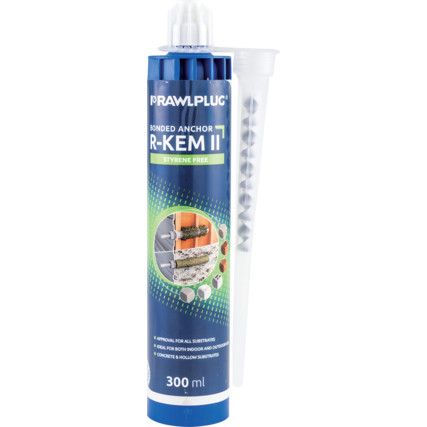Chemical Anchors
Chemical anchors, also known as chemical fixings or chemical studs refer to bonding used between metallic components and concrete and substrate materials. Here at Cromwell, we offer a selection from leading suppliers Rawl.
Why Chemical anchors?
Chemical anchoring is a method for fastening substrates and concretes that provides greater flexibility than mechanical affixing. Application is quick and easy; the fast acting resin creates as strong grip as it is able to fully fill the hole. This creates a complete adhesion, fully waterproofed and airtight grip around the fixing. Chemical anchors also allow for slight adjustments that can be made in the setting time unlike mechanical studs. There is also unlimited depth choices as any length rod can be used, thus the ability to increase load capacity. Chemical fixings can also be used in concrete blocks to prevent cracking and is ideal for securing concrete steps, concrete stairs or railing edges.
Chemical anchor types
Resin - this is injected into a hole prior to the insertion of a stud using a mastic gun.
Capsule - holds the exact amounts of chemicals to firmly affix in place. Suitable to a range of applications such as threaded rods, railings, heavy machine, steel columns, garage doors and guard rails.
FAQ
Are chemical anchors easy to remove?
Generally, a pipe wrench, screwdriver, or vice grips can unthread the protruding bolt to leave the female anchor flush with the concrete. In some cases, it can be pulled out the hole in full or a hammer can be used to knock the anchor tube below the floor.

